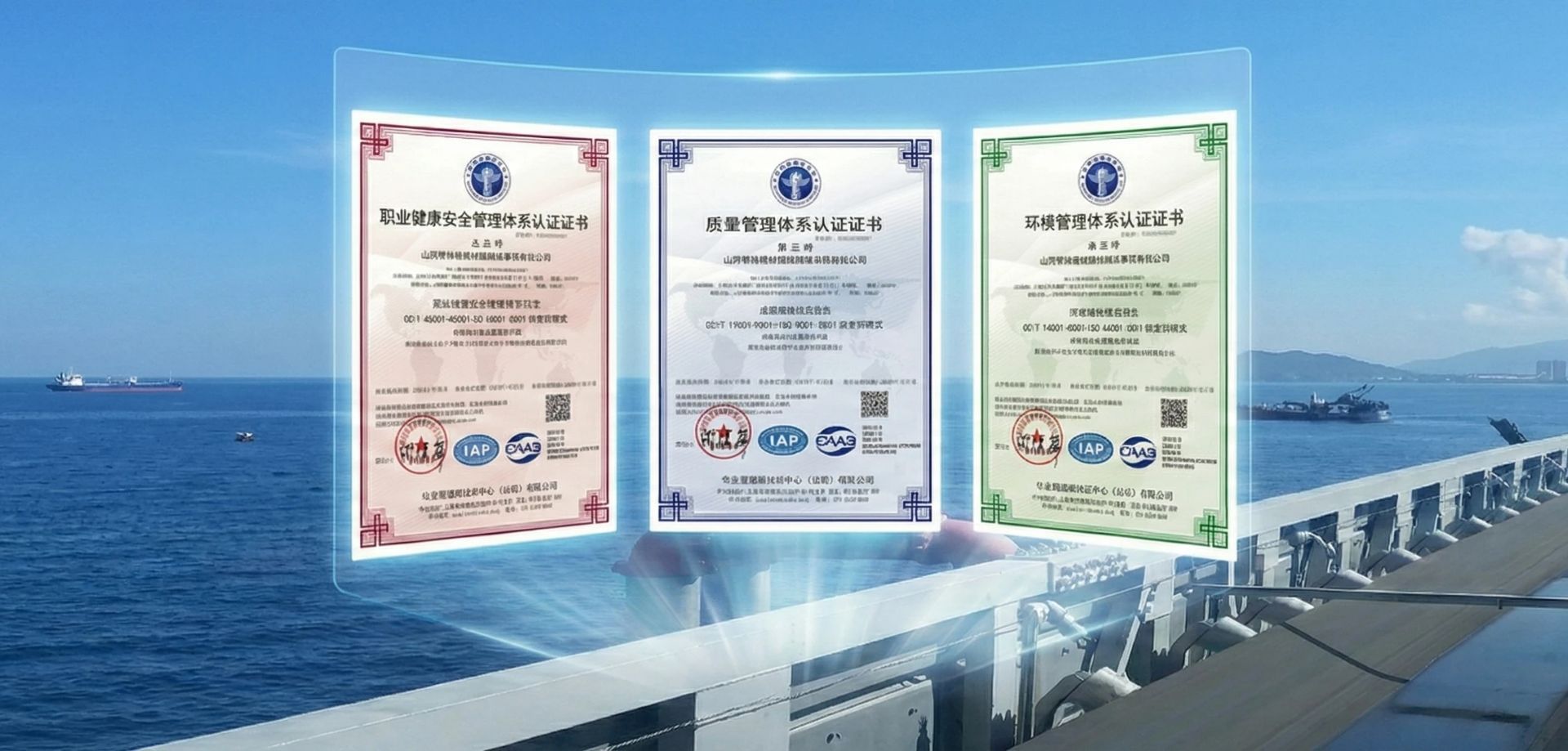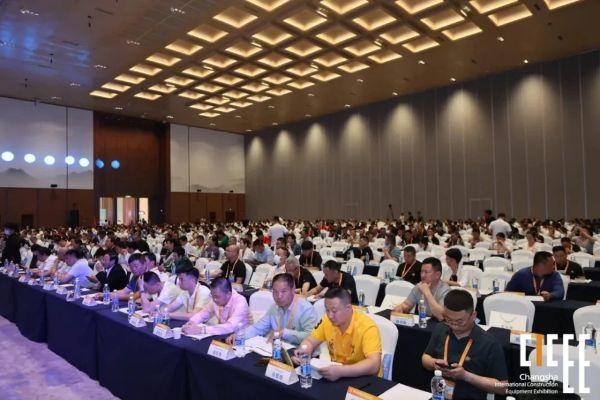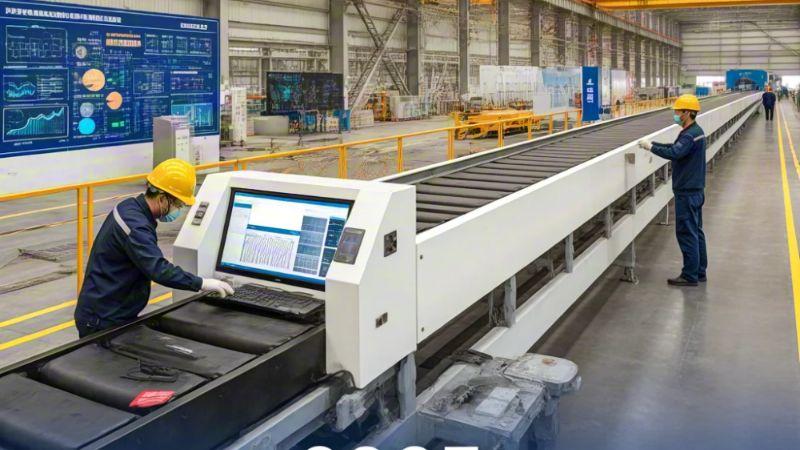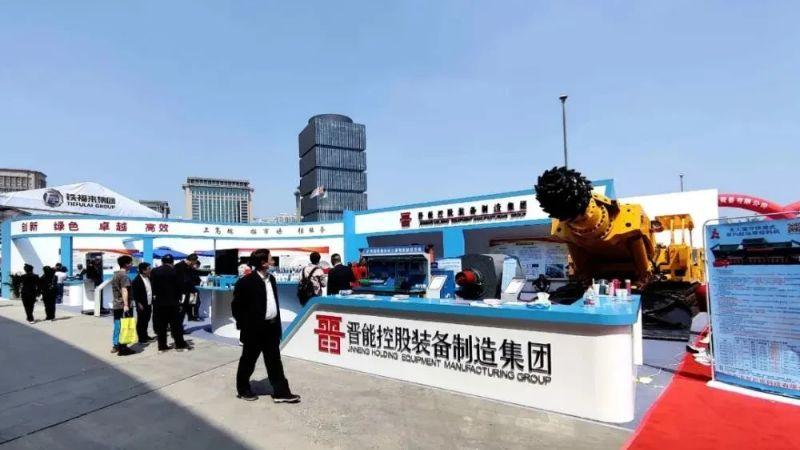Troughing idlers might seem like small players in the world of conveyor systems, but they’re the secret sauce behind smooth, efficient material handling. Whether you’re a newbie figuring out the basics or a seasoned pro troubleshooting a noisy belt, we’ve got answers to your burning questions. Dive into this FAQ guide to unlock everything you need to know about troughing idlers for conveyor belts—and keep your operation humming like a well-oiled machine!
🔍 1. What Are Troughing Idlers for Conveyor Belts?
Answer: Troughing idlers are the unsung heroes of conveyor systems—rollers that prop up the belt and mold it into a “U” shape to haul bulk goodies like coal, grain, or gravel. Unlike flat idlers, their angled design (think 2 or 3 rollers) keeps materials from tumbling off, making them a game-changer for heavy-duty transport.
⏳ 2. How Often Should Troughing Idlers Be Replaced?
Answer: It’s all about wear and tear. In mild conditions, sturdy steel idlers can soldier on for 5-10 years. But in gritty mines or soggy ports? You’re looking at 2-5 years. Watch for cracked rollers or screeching bearings during checkups—those are your red flags to swap them out.
🧩 3. How Do I Pick the Perfect Troughing Idlers for My Conveyor Belt?
Answer: Think of it like a puzzle: match the pieces to your needs. Heavy loads (ore, rocks) call for 3-roll idlers; lighter stuff (grains) suits 2-roll. Trough angles matter too—20° for gentle loads, 45° for bulky ones. Factor in your environment (dusty? wet?) and check specs with a supplier for a spot-on fit.
💰 4. What’s the Price Range for Troughing Idlers?
Answer: Costs depend on the bells and whistles. Basic 2-roll steel idlers start at 50 a pop, while beefy 3-roll versions can hit 150+. Fancy rubber-coated troughing idlers for conveyor belts cost more. A full set? Budget 2,000, but snag quotes to pin it down.
🔧 5. How Do I Install Troughing Idlers the Right Way?
Answer: Precision is key! Level your conveyor frame first, then space idlers 3-5 feet apart based on load. Align them dead-on with a laser or level, bolt ‘em tight (but not too tight), and test the belt. A wobbly setup spells trouble, so take your time.
🛠️ 6. What Maintenance Keeps Troughing Idlers in Top Shape?
Answer: Treat them like a prized tool: check monthly for wear, brush off dust, and grease bearings every 6 months (don’t overdo it—sticky dirt’s a buzzkill). Listen for odd sounds and feel for shakes—catching issues early saves big headaches.
🚨 7. Why Is My Conveyor Belt Shifting or Noisy?
Answer: A shifting belt screams misalignment or uneven loads—realign idlers and tweak tension. Noise? Squeaks mean dry bearings; grinding hints at debris. Clean, lube, or replace damaged parts fast to hush it up and keep things steady.
💧 8. Can Troughing Idlers Handle Wet or Sticky Stuff?
Answer: You bet—but pick smart. Steel idlers with sealed bearings shrug off moisture, while rubber-coated ones fend off sticky cling-ons like wet clay. Keep them clean in messy conditions, or buildup could gum up the works.
⚖️ 9. What’s the Deal with 2-Roll vs. 3-Roll Troughing Idlers?
Answer: It’s a showdown of strength vs. simplicity. 2-roll idlers are lightweight champs for small loads, forming a shallow trough. 3-roll idlers pack an extra punch with a deeper trough, tackling hefty hauls like coal or rocks. Load size decides the winner.
🛒 10. Where Can I Score High-Quality Troughing Idlers?
Answer: Shop smart—hit up trusted conveyor suppliers, online industrial hubs, or direct manufacturers. Dig into reviews, check certifications, and demand warranties. Compare quotes to snag top-notch troughing idlers for conveyor belts that won’t let you down.
⏲️ 11. Do Troughing Idlers Impact Conveyor Belt Lifespan?
Answer: Big time! Well-aligned, maintained idlers cut friction and spread loads evenly, stretching belt life. Skimp on quality or skip upkeep, and you’ll see sagging, tears, and early goodbyes. Invest in the good stuff—it pays off.
🌍 12. Are There Eco-Friendly Troughing Idler Options?
Answer: Yep, green options exist! Polymer or recycled-material idlers are lighter and rust-proof, trimming energy costs in production and use. They’re niche compared to steel, but perfect for eco-minded ops—just confirm they can handle your load.
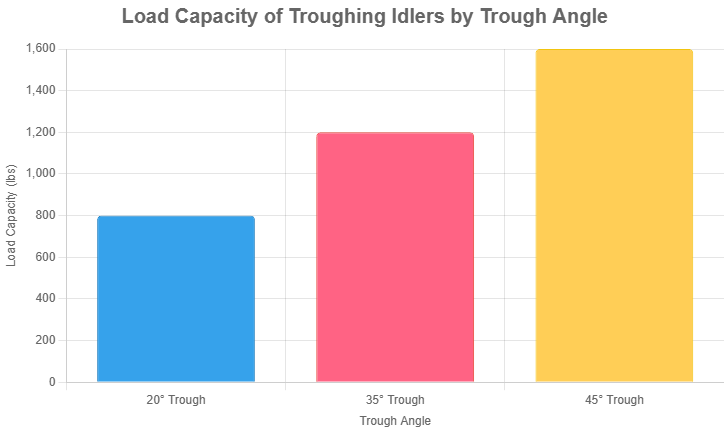
🎯 Ready to Roll?
Troughing idlers might be small, but they’re mighty—and now you’ve got the know-how to make them work for you. Whether you’re sizing up a purchase or tuning your system, these answers are your roadmap to success. Need more help? Reach out to a supplier, grab a spec sheet, or explore our other conveyor tips. Your perfect setup starts here!
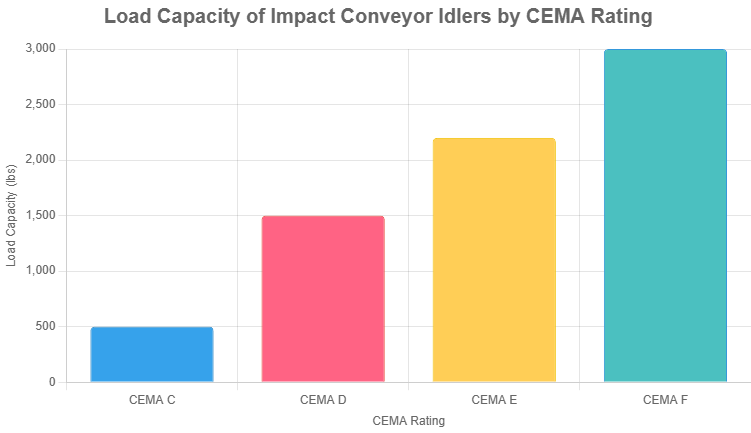
This chart displays the load capacity (in pounds) of impact conveyor idlers from CEMA C to F ratings, assisting users in intuitively selecting the appropriate idler type. Data is referenced from CEMA Standard 502-2022.
Overview
Impact Conveyor Idlers are critical components in belt conveyor systems, designed to absorb impact forces at loading points, protect conveyor belts, and enhance system durability. This FAQ combines foundational knowledge from China Huacheng Conveyor Equipment Co., Ltd, with advanced technical insights to address common questions and provide actionable guidance.
Core Questions
What is an Impact Conveyor Idler?
An Impact Conveyor Idler is a specialized roller installed at conveyor loading or transfer points to absorb the impact of falling materials. Equipped with cushioning materials like rubber or polyurethane, these idlers minimize belt damage and maintain system stability.
How Do Impact Conveyor Idlers Work?
Impact idlers use rubber-coated or polyurethane rollers to cushion the force of materials dropping onto the conveyor belt. This reduces belt wear, prevents misalignment, and stabilizes the belt at transfer points, ensuring smooth material flow.
What Are the Benefits of Using Impact Conveyor Idlers?
Belt Protection: Reduces wear and tear, extending belt life.
Cost Efficiency: Lowers maintenance costs and downtime.
Material Handling: Enhances flow and reduces spillage.
System Durability: Minimizes stress on conveyor components.
Technical Specifications
What Materials Are Used in Impact Conveyor Idlers?
Impact idlers are constructed with durable, impact-resistant materials tailored to specific applications. The following table outlines common materials and their properties:
| Material | Properties | Applications |
|---|---|---|
| Rubber-Coated Steel | High durability, excellent impact absorption | Mining, aggregates, cement plants |
| Polyurethane | Superior wear resistance, flexibility | High-abrasion environments, quarries |
| HDPE (High-Density Polyethylene) | Lightweight, corrosion-resistant | Wet or corrosive environments, ports |
How to Select the Right Impact Conveyor Idler?
Choosing the appropriate idler depends on operational conditions. Key factors include:
Load Weight & Drop Height: Higher impacts require robust materials (e.g., polyurethane).
Belt Speed: Must align with conveyor specifications (e.g., ≤400 ft/min for CEMA C).
Environmental Conditions: Sealed bearings for dust or moisture-heavy settings.
Roller Spacing & Diameter: Optimized for belt width (e.g., 4"-6" diameter for 18"-72" belts).
Advanced Applications
How Do Impact Idlers Enhance Conveyor Efficiency?
Impact idlers improve efficiency by:
Reducing Energy Loss: Cushioning minimizes belt vibration, lowering drive system energy consumption.
Preventing Material Spillage: Optimized roller spacing (e.g., 0.6-0.9m at loading points) ensures stable material flow.
Extending Component Life: Reduces stress on frames and bearings, cutting maintenance frequency by up to 20% (CEMA standards).
Case Study: An Australian iron ore mine reduced annual maintenance costs from $100,000 to $60,000 by installing CEMA D polyurethane-coated impact idlers, achieving a 25% reduction in belt wear.
Do Impact Idlers Comply with CEMA Standards?
Yes, impact idlers are designed to meet CEMA (Conveyor Equipment Manufacturers Association) standards, ranging from CEMA C to F. The table below summarizes CEMA ratings and their applications:
| CEMA Rating | Load Capacity (lbs) | Belt Width (in) | Typical Applications |
|---|---|---|---|
| CEMA C | Up to 500 | 18-48 | Agriculture, light mining |
| CEMA D | Up to 1500 | 24-60 | Coal, aggregates, cement |
| CEMA E | Up to 2200 | 36-72 | Heavy mining, bulk handling |
| CEMA F | Up to 3000 | 48-96 | Large-scale mining, port operations |
Selection Tip: Use CEMA D for high-impact coal conveyors; opt for CEMA E/F for wider belts in extreme conditions.
Maintenance and Customization
What Are Best Practices for Maintaining Impact Idlers?
Regular Inspections: Check for wear on rubber or polyurethane coatings monthly.
Bearing Lubrication: Apply grease every 3-6 months to sealed bearings (e.g., 6306/6308).
System Cleanliness: Remove material buildup to prevent bearing contamination.
Prompt Replacement: Replace idlers showing signs of cracking or reduced rotation.
Can Impact Idlers Be Customized?
Yes, customization options include:
Roller Diameter: 4"-6" (101.6mm-152.4mm) for specific belt widths.
Frame Materials: Galvanized steel for corrosion resistance.
Cushioning Type: Rubber, polyurethane, or HDPE based on impact needs.
Mounting Configurations: Adjustable frames for unique conveyor setups.
Performance Insights
How Do Impact Idlers Reduce Material Spillage?
Impact idlers minimize spillage by:
Absorbing Impact: High-elasticity coatings prevent material rebound.
Optimized Spacing: Spacing at 1/2 standard idler distance (e.g., 0.6m for 1m belt width).
Skirtboard Integration: Enhances sealing at loading points.
What is the Typical Lifespan of Impact Idlers?
Lifespan varies by CEMA rating and conditions:
CEMA C: ~30,000 hours (L10 life, 500 RPM).
CEMA D/E: ~60,000 hours with proper maintenance.
Factors: Abrasive materials (e.g., iron ore) may reduce life, while regular lubrication extends it to 5-7 years.
Conclusion
Impact Conveyor Idlers are essential for protecting conveyor systems in high-impact environments like mining, cement, and ports. By selecting the right CEMA-rated idler, optimizing spacing, and maintaining components, operators can achieve significant cost savings and efficiency gains. For further details or custom solutions, contact China Huacheng Conveyor Equipment Co., Ltd.
Idlers are critical components of belt conveyor systems, widely used in industries such as mining, ports, power generation, and metallurgy for material handling. However, due to prolonged operation, harsh environmental conditions, and improper maintenance, idlers are prone to various failures that can disrupt conveyor performance, leading to downtime and costly repairs. This article provides an in-depth analysis of common idler failures, their causes, and practical solutions. The content is designed to assist engineers, maintenance teams, and industry professionals in diagnosing and addressing idler-related issues effectively.
Author Background
This article is authored by a mechanical engineering professional with over a decade of experience in conveyor system design, maintenance, and optimization. The author has worked on large-scale industrial projects, including conveyor installations in mining and port facilities, and holds certifications in equipment maintenance and reliability engineering. The information presented is grounded in industry standards, real-world case studies, and authoritative technical resources to ensure accuracy and reliability.
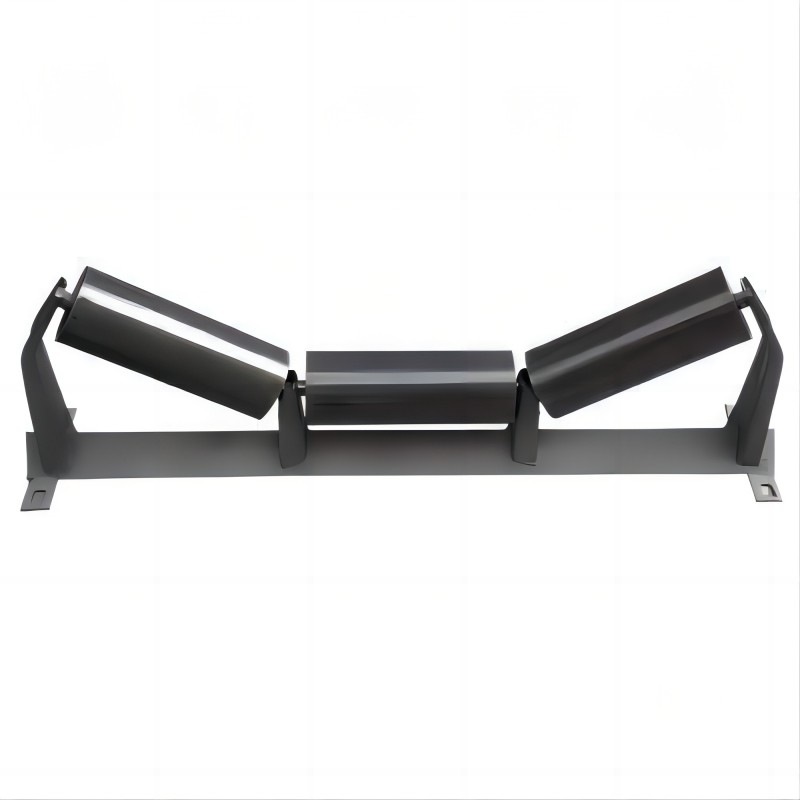
Common Idler Failures: Causes and Solutions
1. Idler Bearing Failure
Symptoms:
Idler rotates sluggishly or seizes, producing abnormal noises (e.g., grinding or squeaking).
Conveyor belt misalignment or unexpected stoppage.
Increased energy consumption due to higher friction.
Causes:
Inadequate Lubrication: Insufficient or degraded lubricant in the bearing, leading to increased friction and wear.
Seal Failure: Poor sealing allows dust, water, or other contaminants to infiltrate the bearing, accelerating damage.
Overloading: Excessive conveyor load or improper tensioning exerts undue stress on bearings.
Low-Quality Bearings: Substandard bearing materials or manufacturing defects reduce lifespan.
Solutions:
Lubrication Maintenance: Inspect and replenish bearings with high-performance synthetic grease (e.g., Shell Gadus S3 V220C) every 3–6 months, depending on operating conditions. Ensure grease is compatible with the bearing type and environment.
Upgrade Sealing Systems: Replace idlers with advanced sealing designs, such as multi-stage labyrinth seals, to prevent contaminant ingress. For harsh environments, consider sealed-for-life idlers.
Load Management: Monitor conveyor load to ensure it remains within design specifications. Install load sensors if necessary to detect overloading early.
Quality Assurance: Source idlers from reputable manufacturers adhering to standards like ISO 1537 or CEMA (Conveyor Equipment Manufacturers Association) guidelines.
Preventive Tips:
Implement a lubrication schedule based on manufacturer recommendations and operating hours.
Use condition-monitoring tools (e.g., vibration sensors) to detect early bearing wear.
Train maintenance staff to recognize signs of bearing distress during routine inspections.
2. Idler Roller Surface Wear
Symptoms:
Visible wear marks, grooves, or pitting on the idler surface.
Conveyor belt vibration, slippage, or material spillage.
Reduced idler diameter, affecting belt tracking.
Causes:
Material Abrasiveness: High-abrasive materials (e.g., iron ore, coal) erode the idler surface over time.
Misalignment: Improper idler alignment with the conveyor belt causes uneven wear.
Poor Material Selection: Idler shells made from low-durability materials (e.g., standard steel) wear out quickly in harsh conditions.
Excessive Belt Tension: Over-tensioned belts increase contact pressure, accelerating wear.
Solutions:
Use Wear-Resistant Materials: Opt for idlers with high-durability coatings, such as polyurethane, rubber, or ceramic lagging, to enhance wear resistance. For example, ceramic-coated idlers can extend service life by up to 3 times in abrasive environments.
Alignment Checks: Regularly verify idler alignment using laser alignment tools to ensure perpendicularity with the belt. Adjust or replace misaligned idlers promptly.
Material Selection: Choose idler materials suited to the conveyed material’s properties. For instance, HDPE (High-Density Polyethylene) idlers are ideal for corrosive or wet environments.
Belt Tension Adjustment: Calibrate belt tension to manufacturer specifications using tensioning devices to avoid excessive pressure on idlers.
Preventive Tips:
Conduct weekly visual inspections to identify early signs of surface wear.
Install belt tracking systems to minimize misalignment-related wear.
Use idlers with replaceable shells for cost-effective maintenance in high-wear applications.
3. Idler Detachment or Loosening
Symptoms:
Idlers detach from their frames or become loose, causing belt misalignment or system stoppage.
Vibrations or wobbling during operation.
Visible damage to idler frames or mounting brackets.
Causes:
Bolt Loosening: Prolonged vibration or inadequate torque during installation leads to loose or broken bolts.
Frame Corrosion: Exposure to moisture, chemicals, or salty air corrodes idler frames, weakening structural integrity.
Poor Installation Practices: Incorrect mounting or insufficient securing of idlers to frames.
Fatigue Failure: Cyclic loading causes metal fatigue in bolts or frames over time.
Solutions:
Bolt Inspection and Replacement: Use high-strength, corrosion-resistant bolts (e.g., Grade 8.8 or stainless steel) and check their torque monthly using a calibrated torque wrench. Replace any damaged or worn bolts immediately.
Corrosion Protection: Apply protective coatings (e.g., epoxy or zinc galvanizing) to idler frames, or use stainless steel frames in corrosive environments like coastal ports.
Improved Installation: Follow manufacturer guidelines for idler mounting, ensuring proper alignment and torque specifications. Use lock washers or thread-locking compounds to prevent bolt loosening.
Frame Reinforcement: For heavy-duty applications, reinforce idler frames with additional bracing or thicker materials to withstand cyclic loads.
Preventive Tips:
Implement a monthly bolt-tightening schedule as part of routine maintenance.
Use corrosion-resistant materials in environments with high humidity or chemical exposure.
Conduct stress analysis during conveyor design to ensure frames can handle operational loads.
4. Material Buildup or Sticking on Idlers
Symptoms:
Material adheres to the idler surface, increasing rotational resistance.
Conveyor belt mistracking or uneven wear.
Reduced conveyor efficiency and potential motor overload.
Causes:
Sticky Materials: Conveyed materials like wet coal, clay, or cement have high adhesion properties.
Ineffective Cleaning Systems: Worn or improperly adjusted belt cleaners fail to remove material residue.
Idler Surface Properties: Smooth or worn idler surfaces promote material adhesion.
Environmental Factors: High humidity or temperature fluctuations exacerbate material sticking.
Solutions:
Install Effective Cleaning Systems: Use high-performance belt cleaners, such as polyurethane scraper blades or rotary brush cleaners, to remove material buildup. Ensure cleaners are adjusted to maintain contact with the belt without excessive wear.
Self-Cleaning Idlers: Deploy idlers with non-stick surfaces, such as rubber-coated or spiral idlers, which reduce material adhesion.
Regular Cleaning: Schedule weekly cleaning of idler surfaces using high-pressure water jets or manual scraping, depending on the material and environment.
Environmental Controls: In humid or sticky material environments, consider installing dehumidifiers or material conditioners (e.g., anti-stick sprays) to reduce adhesion.
Preventive Tips:
Inspect and replace worn belt cleaners promptly to maintain cleaning efficiency.
Use idlers with textured or grooved surfaces to minimize material buildup.
Monitor material properties and adjust cleaning systems seasonally to account for environmental changes.
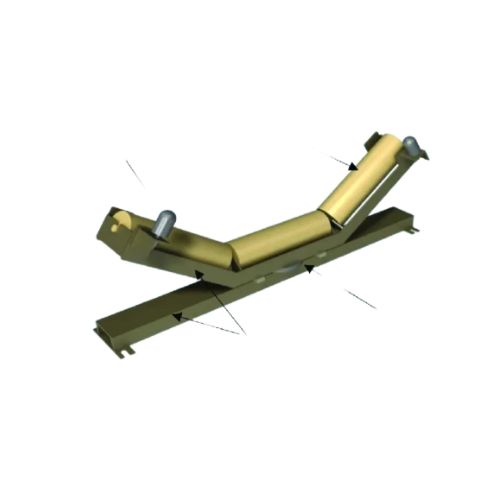
Preventive Maintenance Strategies
To minimize idler failures and extend their service life, consider the following proactive measures:
Select High-Quality Idlers: Choose idlers that comply with international standards, such as ISO 1537 or CEMA, and are sourced from reputable manufacturers with proven track records.
Implement a Maintenance Schedule: Develop a comprehensive maintenance plan, including daily visual inspections, weekly alignment checks, and monthly lubrication and bolt-tightening routines. Use digital maintenance management systems to track idler conditions.
Train Maintenance Personnel: Provide regular training on idler maintenance, fault diagnosis, and safety protocols to ensure consistent and effective upkeep.
Environment-Specific Design: Select idler types and materials tailored to the operating environment. For example, use corrosion-resistant idlers in coastal areas or high-durability idlers for abrasive materials.
Condition Monitoring: Deploy sensors for vibration, temperature, or acoustic monitoring to detect early signs of idler failure, enabling predictive maintenance.
Real-World Case Study
In a large-scale coal mine conveyor system, frequent idler bearing failures led to significant downtime, costing approximately Fajardo over $100,000 annually. The root causes were identified as poor sealing and insufficient lubrication. The maintenance team replaced the idlers with multi-stage labyrinth-sealed units and implemented a high-performance synthetic grease lubrication schedule. They also installed vibration sensors to monitor bearing health. As a result, idler lifespan increased by 60%, and annual downtime was reduced by 100 hours, saving approximately $80,000 in operational costs.
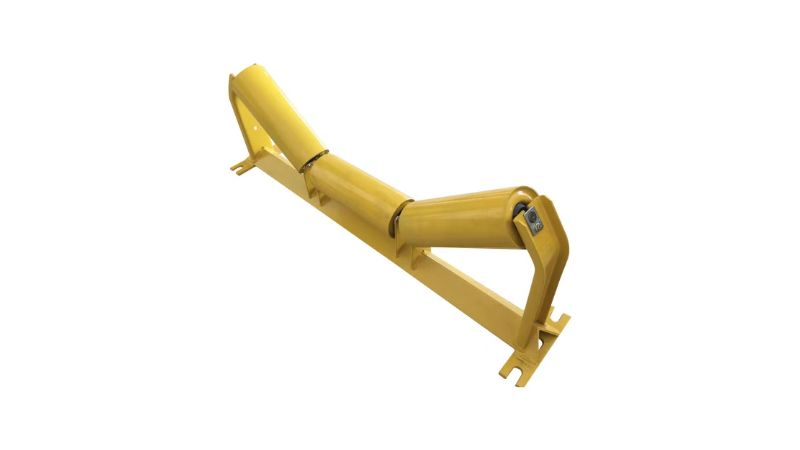
References
Belt Conveyors for Bulk Materials, 7th Edition, Conveyor Equipment Manufacturers Association (CEMA), 2014.
ISO 1537: Rollers for Belt Conveyors – Technical Requirements.
Conveyor System Maintenance and Reliability, Industrial Press, 2019.
Case studies from the China Heavy Machinery Industry Association, 2023.
Conclusion
Idler failures are a common challenge in belt conveyor systems, but with proper diagnosis, maintenance, and preventive strategies, their impact can be significantly reduced. This article provides a detailed guide to identifying and resolving idler issues, backed by practical solutions and real-world insights. By implementing these recommendations, industries can enhance conveyor reliability, reduce downtime, and optimize operational efficiency. For further technical assistance, consult with certified conveyor system specialists or reputable equipment suppliers.
Published by: Huachang Intelligent Machinery Manufacturing Co., Ltd.
Experience in Conveyor Solutions Since 1998 | www.roller66.com
Conveyor idlers, commonly known as rollers, are critical components of belt conveyor systems widely used in industries such as mining, cement, power generation, ports, and bulk material handling. Though small in size, they play a major role in supporting belt stability, reducing energy loss, and extending equipment lifespan. This article explores the types and functions of conveyor idlers, offering practical insights backed by 20+ years of field expertise.
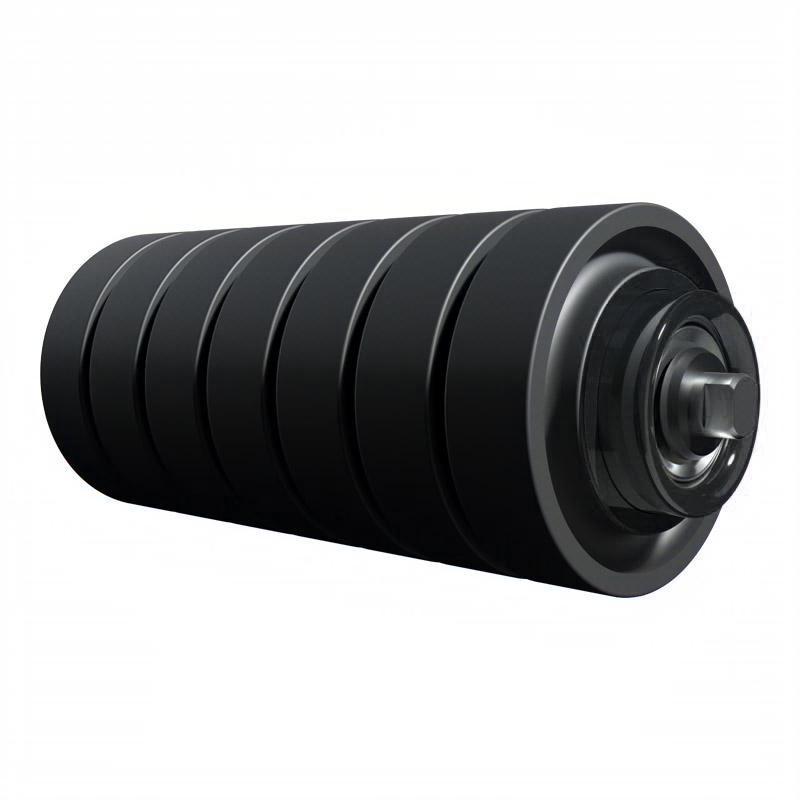
Why Conveyor Idlers Matter
Idlers serve as the foundation of belt support, ensuring efficient and smooth transportation of materials across long distances and harsh environments. Poor-quality or improperly installed idlers can cause belt misalignment, excessive wear, increased downtime, and even safety hazards.
Key Functions of Conveyor Idlers
Conveyor idlers perform the following essential tasks:
🟢 Support: Hold the weight of both the conveyor belt and the transported material.
⚙️ Reduce Friction: Allow the belt to move smoothly by reducing drag through rotation.
🔄 Guide the Belt: Keep the belt centered, preventing misalignment and spillage.
🛡️ Absorb Impact: Cushion the shock from material drop zones, protecting the belt.
⏳ Prolong Lifespan: By stabilizing operation, idlers extend the working life of the conveyor system.
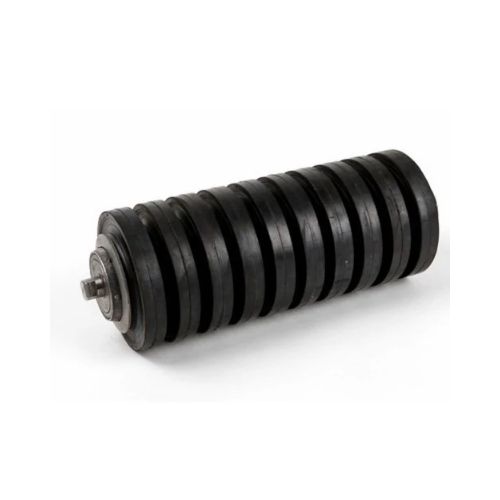
Main Types of Conveyor Idlers
Conveyor idlers can be categorized based on their structure, position, and material.
1. By Structure or Function
| Type | Description |
|---|---|
| Troughing Idlers | Arranged in a V-shape (usually 3-roll sets) to cradle bulk materials. |
| Return Idlers | Support the return side of the belt, often single-roller design. |
| Impact Idlers | Fitted with rubber rings to absorb shock at loading zones. |
| Self-Aligning Idlers | Automatically correct belt misalignment via a pivot mechanism. |
| Friction Idlers | Use rolling resistance to assist in belt tracking. |
2. By Installation Position
Carrying Idlers: Positioned on the top side to carry loaded belt.
Return Idlers: Positioned beneath to support the unloaded belt.
3. By Material
Steel Idlers: Durable, cost-effective, ideal for heavy-duty applications.
HDPE (Plastic) Idlers: Lightweight, corrosion-resistant, and quieter.
Ceramic Idlers: Highly wear-resistant, used in high-abrasion environments.
4. By Sealing Structure
Labyrinth Seal Idlers
Contact Seal Idlers
Multi-seal Idlers
A strong sealing system prevents dust and water from entering, which significantly impacts the idler’s service life.
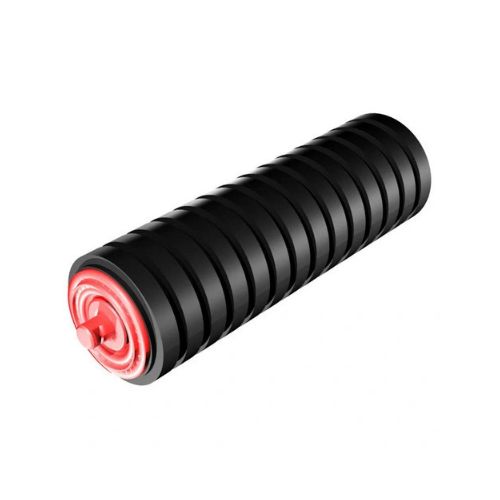
How to Choose the Right Conveyor Idlers
When selecting idlers, consider the following:
Material properties: Is the load abrasive, corrosive, or wet?
Environmental conditions: Will the system face dust, water, heat, or chemicals?
Belt speed and width: Directly affect idler spacing and diameter.
Expected lifespan vs cost: Balance initial cost with maintenance frequency.
A high-quality idler should have:
Low rotational resistance
Excellent concentricity
Tight sealing and minimal maintenance needs
Compatibility with CEMA or ISO standards
💡 Expert Tip: Use impact idlers at loading points and self-aligning idlers in long-distance conveyors to prevent misalignment issues.
Real-World Experience: What We've Learned
At Huachang, we have served over 500 mining and heavy industry clients worldwide. Through field feedback, we’ve observed that over 60% of belt failure incidents are related to improper idler selection or installation.
Our on-site engineers often recommend:
Regular idler inspection schedules (every 500–1000 operational hours)
Keeping spare idler sets on-site for critical zones
Using ceramic idlers in extremely abrasive conditions
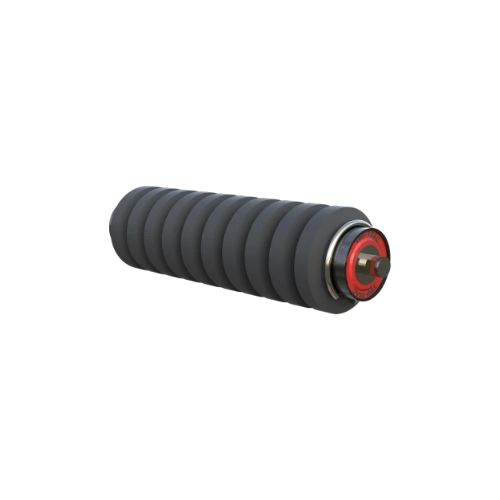
Conclusion
Conveyor idlers are not just accessories—they are key to conveyor system efficiency and safety. Understanding their types and functions helps you make informed decisions during equipment design, purchase, and maintenance.
If you’re looking to optimize your conveyor system, choosing the right idlers is a smart start.
About Huachang
Huachang Intelligent Machinery Manufacturing Co., Ltd.
Founded in 1998, Huachang specializes in manufacturing conveyor rollers, idlers, and customized belt conveyor systems for mining and heavy industry clients. Our factory complies with ISO, CEMA, and CE standards.
🌐 Website: www.roller66.com
📞 Phone: +86 18103415599 (Mr. Li)
📧 Email: daochuhai8@gmail.com
References
CEMA (Conveyor Equipment Manufacturers Association) Standards
Field Reports from Huachang Engineering Team
ISO 1537 Belt Conveyor Guidelines

📘 Basic Knowledge
1. What Is the CEMA Standard?
CEMA, short for the Conveyor Equipment Manufacturers Association, is a recognized industry body in North America that develops design, safety, dimensional, and performance standards for material handling systems. The CEMA Standard provides clear guidelines for the construction and operation of components such as idlers, pulleys, and belts.
By aligning with CEMA standards, manufacturers ensure that conveyor components are interchangeable, reliable, and safe, which is essential for minimizing system downtime and maximizing productivity in bulk material handling environments.
Leading manufacturers like Luff Industries Ltd and others use CEMA standards as the foundation for product design and quality assurance.
2. What Is a CEMA Standard Idler?
A CEMA Standard Idler is a conveyor roller unit manufactured according to CEMA specifications, ensuring it meets standardized requirements for load rating, dimensions, shaft size, and bearing configuration. These idlers play a critical role in supporting the belt and facilitating smooth material transport.
Thanks to their standardization, CEMA idlers are widely adopted across industries like mining, cement, aggregates, and power generation. Their consistent design allows for easy replacement, better compatibility across systems, and enhanced safety under demanding operational conditions.
Whether you’re operating a light-duty belt or a heavy-load bulk material handling system, selecting the right class of CEMA idler ensures your conveyor system runs efficiently and within compliance.
🔍 Selection Guidelines
3. How to Choose the Right CEMA Idler Class for Your Application?
CEMA classifies idlers into six categories—Classes A through F—based on load capacity, belt width, and operating conditions. Selecting the correct CEMA idler class is critical for ensuring system performance, minimizing wear, and avoiding premature failures.
Here’s a breakdown of the most commonly used CEMA classes:
CEMA Class B
Designed for light-duty applications, such as in agriculture, food processing, and small package handling. Class B idlers typically support lower belt speeds and lighter material loads.CEMA Class C
Suited for medium-duty operations like sand and gravel plants, small mining operations, and aggregate processing. They provide more robust construction and higher load ratings than Class B.CEMA Class D and above (E, F)
Recommended for heavy-duty and high-impact environments, such as coal mining, steel production, and large-scale material transport. These idlers are engineered for high-speed belts, extreme loads, and abrasive materials.Class D is often used in standard mining and quarry operations.
Class E and Class F are reserved for the most demanding applications, including deep mining and continuous high-load conveying.
When choosing a CEMA idler, consider the following factors:
Material weight and abrasiveness
Conveyor belt speed and width
Environmental conditions (e.g., temperature, moisture, dust)
Expected hours of operation per day
Working with a reputable CEMA-compliant manufacturer can help you assess these variables and select the most efficient and cost-effective idler class for your operation.

4. How Does Idler Diameter Affect Conveyor Performance?
The diameter of a conveyor idler plays a crucial role in determining the overall performance and efficiency of a bulk material handling system. It directly influences key operational parameters such as belt speed, load support, and energy consumption.
Here’s how idler diameter impacts performance:
Larger Diameter Idlers
Better suited for higher belt speeds and heavier loads.
Provide greater contact area with the belt, which helps reduce belt sag and wear.
Often used in CEMA D, E, and F-class applications, especially in mining and heavy industry.
Help minimize the rotational speed of bearings, extending component lifespan.
Smaller Diameter Idlers
Ideal for light-duty applications where space, belt speed, and material load are relatively low.
Common in CEMA B and C-class systems such as food processing or agricultural operations.
Typically cost less and are easier to install in compact systems.
When selecting the appropriate idler diameter, consider:
The belt width and speed
The material type and weight
The operating environment (e.g., moisture, dust, temperature)
The support spacing and frame structure
⚠️ Important: While larger diameters offer higher load-bearing capabilities, they may not always be compatible with your existing conveyor frame. Proper engineering assessment is essential to ensure optimal integration and system performance.
🛠️ Maintenance & Care
5. How to Extend the Service Life of CEMA Idlers?
Proper and proactive maintenance practices are essential to extend the lifespan of your CEMA standard idlers and prevent costly conveyor downtime. Even the most durable idlers require routine care to perform efficiently over time.
Here are key tips for maintaining idlers in peak condition:
Regular Inspection
Periodically check for signs of wear, corrosion, or structural damage. Pay close attention to bearing performance and sealing integrity. Replace damaged or underperforming idlers promptly to avoid strain on the entire conveyor system.Keep Idlers Clean
Accumulated dirt, debris, or moisture can interfere with the rotation and cause premature bearing failure. Clean the idlers frequently—especially in dusty or muddy environments—to prevent buildup around the shaft or seals.Lubrication
If your idlers are equipped with greaseable bearings, follow the manufacturer’s recommended lubrication schedule. Proper lubrication minimizes friction, reduces heat buildup, and protects internal components from contaminants.Environmental Protection
In corrosive or wet environments, use coated or stainless steel idlers and ensure seals are intact to prevent ingress of water or chemicals.
By incorporating these practices, you can dramatically improve idler longevity and lower your system’s total maintenance cost.

6. How Do You Know When an Idler Needs Replacement?
Not all idler failures are immediately obvious. Being able to identify early warning signs is key to avoiding system shutdowns or material spillage.
Common signs that indicate a conveyor idler may need replacing include:
Unusual Noise During Operation
Grinding, squeaking, or rattling noises may suggest a seized bearing, cracked shell, or other internal damage.Irregular Wear Patterns
Flat spots, grooves, or uneven surface wear on the idler face can affect belt tracking and increase belt wear.Conveyor Belt Misalignment or Vibration
A misaligned or wobbling idler can cause belt drift, increase tension on the system, and lead to premature belt failure.Increased Belt Tension or Power Consumption
A failing idler can increase drag, causing the drive motor to work harder and consume more energy.
🔧 Pro Tip: Set up a preventive maintenance schedule and keep a record of inspections. Many operations replace idlers based on time or usage thresholds—even if they haven’t failed yet—to avoid unplanned downtime.

📎 Additional FAQs
7. Are CEMA Standard Idlers Suitable for High or Low Temperature Environments?
Standard CEMA idlers are typically designed to operate within a conventional temperature range—usually between -10°C to 60°C (14°F to 140°F). However, in industries where extreme temperatures are a concern, such as:
Steel production or cement kilns (high temperatures)
Arctic mining or refrigerated warehousing (low temperatures)
…it’s critical to use temperature-resistant idlers that are built with specialized materials like:
High-temperature seals and lubricants
Cold-resistant polymer housings or rubber components
Stainless steel or galvanized steel shells for thermal stability
When operating in harsh environments, choosing idlers engineered specifically for those conditions will protect your equipment and maintain safety and efficiency over time.
🧊🔥 Tip: Always consult with your idler manufacturer for material specs, operating limits, and test results when planning a conveyor system in an extreme climate.
8. How Can You Ensure the Idlers You Purchase Meet CEMA Standards?
Not all conveyor idlers on the market adhere to official CEMA specifications. To ensure full compliance:
✅ Choose a Reputable Manufacturer or Supplier
Look for companies that are CEMA members or publicly state that their products are CEMA-compliant.📄 Request Documentation
Ask for product certificates, technical drawings, or test reports that show the idlers meet or exceed CEMA requirements in terms of dimensions, load ratings, sealing systems, and material specs.🛠 Verify Manufacturing Capabilities
Check whether the manufacturer uses automated production lines, quality control systems, and raw material traceability to support CEMA compliance.🗣 Read Customer Reviews
Market feedback, especially from industries like mining, quarrying, and energy, can reveal whether the supplier consistently delivers reliable, CEMA-standard components.
By verifying these factors before making a purchase, you reduce the risk of buying substandard or incompatible parts and ensure long-term reliability in your bulk handling operations.

1. What is an Impact Conveyor Idler?
An Impact Conveyor Idler is a specialized idler designed to absorb impact forces at loading points, reducing belt damage and extending service life.
2. How Does an Impact Conveyor Idler Work?
Impact idlers feature rubber-coated rollers that cushion falling materials, preventing excessive wear and maintaining belt stability at transfer points.

3. What Are the Benefits of Using Impact Conveyor Idlers?
Protects conveyor belts from premature damage
Reduces maintenance costs and downtime
Improves material handling efficiency
Enhances conveyor system durability

4. What Materials Are Used in Impact Conveyor Idlers?
Impact rollers are typically made of:
Rubber-coated steel – Durable and impact-resistant
Polyurethane – Offers higher wear resistance
HDPE (High-Density Polyethylene) – Lightweight and corrosion-resistant
5. Where Are Impact Conveyor Idlers Commonly Used?
These idlers are essential in industries like mining, cement, power plants, and bulk material handling facilities, where heavy materials create high impact loads.

6. How to Choose the Right Impact Conveyor Idler?
Consider these factors:
Load weight & drop height – Higher impact requires stronger materials
Belt speed – Must match conveyor specifications
Environmental conditions – Moisture, dust, and temperature considerations
Roller spacing & diameter – Ensures optimal belt support
7. What Are the Best Maintenance Practices for Impact Idlers?
Inspect regularly for wear or damage
Lubricate bearings to prevent failures
Keep the conveyor system clean
Replace worn idlers promptly

8. Can Impact Idlers Be Customized?
Yes! Custom options include roller diameter, frame materials, impact absorption materials, and mounting configurations tailored to specific operational needs.

Hey there! If you’re interested in the Octagonal Smooth Conveyor Belt, you’ve come to the right place. This unique belt is revolutionizing industries like mining, logistics, and manufacturing, and for good reason. It’s durable, efficient, and a real problem-solver. We’ve compiled the most frequently asked questions from professionals like you—procurement specialists, engineers, and curious minds—and answered them with a mix of expertise and friendliness. Let’s dive in!
1. What Makes the Octagonal Smooth Conveyor Belt Special?
The Octagonal Smooth Conveyor Belt stands out from the crowd. Its unique selling point? A clever octagonal pattern combined with a silky-smooth surface. The octagons provide extra grip and stability, ensuring materials stay in place even under heavy loads. The smooth top reduces friction, leading to less wear and tear and easier cleaning. It’s like a multitasking superhero for your conveyor system—tough, reliable, and low-maintenance.
2. Which Industries Can Benefit from This Belt?
This belt is a true jack-of-all-trades! It excels in:
Mining: Hauls coal, ore, and gravel with ease, thanks to its abrasion resistance.
Logistics: Keeps packages gliding smoothly in warehouses without snags or jams.
Bulk Materials Handling: Manages grains, sand, and aggregates with minimal spillage.
Manufacturing: Moves parts along assembly lines with precision.
Basically, if you need to move materials—especially in demanding or busy environments—this belt has got you covered.
3. How Does It Compare to Traditional Conveyor Belts?
Great question! Compared to standard flat or fabric belts, the Octagonal Smooth Conveyor Belt offers several advantages:
Durability: Its high-strength polyester core and durable cover (PVC or PU) outlast traditional belts that fray or tear quickly.
Efficiency: Less friction and better grip mean smoother operations and reduced energy waste.
Maintenance: Traditional belts often require frequent repairs due to mistracking or buildup. This one is designed to keep running with minimal fuss.
It’s like upgrading from an old bike to a sleek new model—same job, but a much smoother ride.

4. What Are the Key Specifications to Consider?
Let’s get technical for a moment (don’t worry, we’ll keep it simple):
Width: Ranges from 300mm to 2400mm, fitting most systems, whether small or large.
Thickness: Between 8mm and 20mm, providing flexibility while remaining sturdy.
Tensile Strength: 200 N/mm to 1000 N/mm, capable of handling light to heavy loads.
Load Capacity: Up to 5000 kg/m, offering serious muscle.
Speed: Reaches up to 6 m/s, keeping things moving quickly.
Temperature Resistance: Operates between -20°C to +80°C (or +120°C with customization), suitable for various conditions.
For more details, specs can be tailored to fit your specific setup—just consult your supplier!
5. Is It Suitable for Harsh Environments?
Absolutely! The Octagonal Smooth Conveyor Belt is built to last. Whether you’re dealing with dusty mines, wet warehouses, or hot processing plants, this belt can handle it. The durable cover resists abrasion, moisture, and heat, while the smooth surface easily sheds sticky buildup. If you’re in a tough spot (literally or figuratively), this belt is ready for action.

6. How Do I Install It Properly?
Installing the belt is straightforward:
Alignment: Match the belt to your pulleys and loading zone, ensuring the width fits snugly.
Tensioning: Stretch it to 1-2% elongation (check your supplier’s spec sheet for confirmation). Too loose can cause slippage, while too tight can lead to strain.
Testing: Run it slowly at first, watching for wobbles or noise, and adjust as necessary.
Pro tip: A vulcanized joint provides maximum strength. You’ll be up and running smoothly in no time!
7. What Maintenance Does It Require?
Good news—it’s low-maintenance, but a bit of care keeps it running smoothly:
Surface Inspection: Perform monthly checks for cuts or wear to catch issues early.
Cleaning: Wipe with mild soap and water to keep the smooth top pristine. Avoid harsh chemicals, as they can damage the cover.
Listening for Issues: Squeaks or grinds may indicate a problem with a pulley or joint—address it promptly.
Regular TLC means less downtime and a longer lifespan. Easy, right?
8. How Long Does It Last?
With proper use, this belt is a marathon runner. Depending on your load and environment, it can last for 50,000+ hours. Avoid overloading (stick to the 5000 kg/m max), keep it clean, and perform regular inspections—you’ll get years of reliable service. It’s an investment that keeps paying off.

9. Where Can I Purchase One?
Looking to get your hands on an Octagonal Smooth Conveyor Belt? You have several options:
Online: Many top suppliers offer it online—quick, convenient, and you can compare specs.
Direct from Manufacturer: Contact a trusted manufacturer for custom builds or bulk deals.
Local Industrial Suppliers: Check with industrial suppliers near you for fast delivery.
For the best experience, look for a supplier with great reviews, solid support, and quality certifications—your belt’s performance depends on the team behind it.
10. Can It Be Customized?
Absolutely! Need a specific width, thicker cover, or enhanced heat resistance? Suppliers can tailor the Octagonal Smooth Conveyor Belt to your exact needs. Discuss your load, speed, or environment with them, and they’ll create a belt that’s perfect for you. It’s like getting a custom-fit suit for your conveyor system!
Still Have Questions?
We hope this FAQ has cleared things up for you! The Octagonal Smooth Conveyor Belt is all about making your material handling smoother, tougher, and more efficient. Still curious? Reach out to us or your supplier—we’re here to help you find the perfect fit. Ready to upgrade your system? Let’s get moving!

🔧 Your Ultimate Guide to Conveyor Efficiency 🔧
1. What Are Comb Iron Idlers?
Comb Iron Idlers are self-cleaning conveyor rollers with a unique comb-shaped design that prevents material buildup. Ideal for:
🔹 Mining | 🔹 Bulk Handling | 🔹 Cement Plants
✅ Reduces maintenance needs ✅ Boosts conveyor performance.
2. How Do They Improve Efficiency?
Prevents material jamming → Avoids belt misalignment.
Low-friction design → Cuts energy use by up to 25%.
Sealed bearings → Blocks dust/moisture for longer lifespan.
3. Which Industries Benefit Most?
🏭 Top Applications:
Mining/Coal: Heavy-duty load handling.
Cement/Construction: Smooth powdery material flow.
Bulk Handling: Ports, power plants, logistics hubs.
Chemical/Grain: Clean, stable transport.

4. Advantages Over Standard Idlers
💎 Key Upgrades:
| Feature | Standard Idlers | Comb Iron Idlers |
|---|---|---|
| Self-Cleaning | ❌ | ✅ |
| Energy Efficiency | Low | High |
| Lifespan | Short | Extended |
| Dust/Moisture Resistance | ❌ | ✅ (Sealed Bearings) |
5. How to Choose the Right Idlers
🔍 3 Critical Factors:
Load Capacity: Light, medium, or heavy-duty?
Belt Compatibility: Matches impact/tracking rollers.
Environment:
💧 Wet/Dusty: Use sealed bearings.
🔥 High Heat: Opt for heat-treated steel.
6. High-Temperature Use?
🔥 Yes! Specialized idlers with:
Heat-treated steel
High-temp seals
Perfect for steel mills, cement kilns, and power plants.
7. Reduce Maintenance Costs?
💸 Absolutely!
Self-cleaning design → Less belt wear.
Sealed bearings → Fewer replacements.
Durable materials → Longer lifespan.
8. Wet/Corrosive Environments?
🛡️ Choose:
Galvanized steel (wet/humid areas)
Stainless steel (chemical exposure)
Ideal for ports, food plants, and mines.

9. Replacement Frequency
⏳ Longer Lifespan Than Standard Idlers (with proper care).
📌 Check regularly:
Material abrasiveness
Load intensity
Environmental stress
10. Where to Buy?
🛒 Look For:
Custom solutions from industrial suppliers.
Precision engineering + durable designs.
Tip: Partner with a supplier offering warranties and technical support.
Final Thoughts
⚙️ Upgrade your conveyor system with Comb Iron Idlers for:
🔹 Maximum efficiency
🔹 Lower costs
🔹 Unmatched durability
Contact a trusted supplier today! 🚀
Still have questions? Let’s connect! 💬

If you’re dealing with conveyor systems, especially in industries like mining, coal processing, or aggregates, you might have heard of Iron Buffer Wing Idlers. These specialized conveyor idlers are designed to absorb impact, reduce material buildup, and extend the life of your conveyor belt. But how exactly do they work, and why should you consider them? Let’s dive into the details with this comprehensive FAQ guide.
1. What Are Iron Buffer Wing Idlers?
Iron Buffer Wing Idlers are a type of impact-resistant conveyor idler designed to support the belt in high-impact zones, such as loading points and transfer stations. Unlike standard conveyor idlers, these idlers feature wing-shaped steel discs that help reduce the direct impact of bulk materials on the belt.
Key Features of Iron Buffer Wing Idlers:
Shock Absorption – The wings and optional rubber buffering reduce impact damage to the conveyor belt.
Self-Cleaning Design – The open structure prevents material buildup, reducing wear and maintenance.
Heavy-Duty Construction – Built with high-strength steel, these idlers withstand harsh mining and industrial environments.
Extended Belt Life – By reducing impact forces, they help minimize belt damage, leading to lower replacement costs.
2. How Are They Different from Standard Conveyor Idlers?
The main difference between Iron Buffer Wing Idlers and standard idlers is their impact-resistant design and self-cleaning functionality.
| Feature | Standard Idlers | Iron Buffer Wing Idlers |
|---|---|---|
| Shape | Cylindrical | Winged steel discs |
| Impact Resistance | Low | High |
| Material Build-Up | Prone to clogging | Self-cleaning |
| Best Used For | General belt support | Heavy-impact areas like loading zones |
These idlers are particularly useful when transporting coarse aggregates, coal, ores, and other bulk materials that exert high forces on the conveyor belt.

3. What Industries Use Iron Buffer Wing Idlers?
These idlers are essential in industries where conveyors operate under extreme conditions:
Mining – Transporting heavy ores and minerals requires impact-resistant conveyor rollers.
Coal Processing Plants – Reducing dust accumulation and preventing belt misalignment.
Quarries & Aggregate Plants – Handling bulk stones and gravel with minimal belt damage.
Cement & Steel Plants – Ensuring conveyor longevity in high-temperature and high-load conditions.
If your conveyor system frequently experiences belt wear, impact damage, or material spillage, investing in Iron Buffer Wing Idlers can significantly improve efficiency.
4. How Do I Choose the Right Iron Buffer Wing Idlers?
Selecting the right idlers depends on your conveyor's operating conditions. Here are key factors to consider:
Belt Width Compatibility – Choose idlers that match your conveyor belt width to ensure proper support.
Impact Load Rating – Determine the expected impact force based on the material size and drop height.
Wing Material & Coating – Some models have rubber-coated wings for extra shock absorption.
Sealed Bearings – High-quality sealed bearings minimize lubrication needs and extend idler life.
Corrosion Resistance – If operating in humid or acidic environments, opt for galvanized or coated idlers.
Investing in the right size and type of buffer wing idlers prevents premature belt damage and reduces downtime.
5. How Do Iron Buffer Wing Idlers Reduce Maintenance Costs?
One of the biggest advantages of Iron Buffer Wing Idlers is their ability to reduce maintenance frequency and costs in conveyor systems.
Here’s how they help:
Minimizing Belt Damage – Less impact means fewer belt replacements.
Preventing Material Build-Up – The self-cleaning design reduces clogging and wear.
Reducing Idler Failures – High-strength steel construction ensures durability under extreme loads.
Lowering Downtime – Less maintenance means more production time.
For companies looking to improve conveyor belt longevity, switching to impact-resistant wing idlers can be a game-changer.
6. How to Properly Maintain Iron Buffer Wing Idlers?
Even though these idlers are built for durability, proper maintenance is still necessary for optimal performance. Here are some tips:
Regular Inspections – Check for excessive wear, misalignment, or missing components.
Cleaning the Idler Wings – Remove stuck material to maintain the self-cleaning effect.
Lubricating Bearings (if applicable) – While many use sealed bearings, some models require occasional lubrication.
Ensuring Proper Belt Alignment – Misaligned belts can cause unnecessary wear on idlers.
Replacing Damaged Units – Worn-out idlers can cause increased belt wear and system inefficiency.
By following these simple maintenance steps, you can extend the lifespan of both your conveyor idlers and the belt itself.

7. Are Iron Buffer Wing Idlers a Worthwhile Investment?
Yes! If your conveyor system operates in high-impact environments, upgrading to Iron Buffer Wing Idlers is a cost-effective decision. Here’s why:
Prolongs Conveyor Belt Life – Reducing impact damage saves thousands in belt replacement costs.
Reduces System Downtime – Less maintenance means higher productivity.
Minimizes Material Spillage – The self-cleaning design helps keep your system running smoothly.
Enhances Safety – Reducing material buildup prevents potential hazards.
In the long run, Iron Buffer Wing Idlers help cut maintenance costs, improve efficiency, and keep your conveyor running at peak performance.
Final Thoughts
If your conveyor system is experiencing belt wear, material buildup, or frequent downtime, then switching to Iron Buffer Wing Idlers could be the solution you need. With their shock-absorbing, self-cleaning, and heavy-duty design, they are perfect for industries handling bulk materials in harsh conditions.
Need help selecting the right idlers for your conveyor system? Feel free to reach out, and we’ll be happy to assist!

Conveyor belt cleaners play a crucial role in maintaining efficiency, reducing downtime, and extending the lifespan of your conveyor system. Below, we’ve answered some of the most common questions about conveyor belt cleaners to help you make the best decision for your operation.
1. What Is a Conveyor Belt Cleaner?
A conveyor belt cleaner is a device designed to remove carryback (residual material) from a conveyor belt. By scraping off excess material, it helps prevent buildup, reduces maintenance costs, and improves overall conveyor performance.
2. Why Do I Need a Belt Cleaner?
Without a belt cleaner, leftover material can accumulate, leading to:
✔ Increased wear and tear on the belt and rollers
✔ Material spills and safety hazards
✔ Reduced operational efficiency
✔ Higher maintenance costs
Installing a proper belt cleaning system ensures a cleaner, safer, and more productive workplace.
3. What Are the Types of Conveyor Belt Cleaners?
There are three main types of belt cleaners:
🔹 Primary Belt Cleaners – Installed at the head pulley to remove most of the carryback. Ideal for heavy-duty applications like mining and aggregate.
🔹 Secondary Belt Cleaners – Positioned after the primary cleaner to remove any remaining material for a thorough clean. Often used in industries handling fine materials like cement or grain.
🔹 Tertiary (V-Plow) Cleaners – Installed on the return side of the belt to prevent material buildup on pulleys and rollers. Useful for highly abrasive materials.

4. How Do I Choose the Right Belt Cleaner?
The best belt cleaner depends on factors such as:
✅ Material type – Wet, dry, sticky, or abrasive materials may require different blade materials.
✅ Belt width & speed – Higher speeds may need more durable cleaners.
✅ Operating environment – Extreme temperatures, humidity, or corrosive conditions impact cleaner selection.
✅ Maintenance preference – Some cleaners require frequent adjustments, while others offer self-tensioning features.
5. What Blade Materials Are Used for Belt Cleaners?
Belt cleaner blades come in various materials, each with its own advantages:
🛠 Polyurethane – Flexible and wear-resistant, ideal for lighter applications.
⚙ Tungsten Carbide – Extremely durable, great for heavy-duty and high-speed belts.
🔩 Ceramic – Highly resistant to abrasion, suitable for harsh environments like mining and cement.
6. How Often Should I Replace a Conveyor Belt Cleaner?
The lifespan of a belt cleaner depends on factors such as material abrasiveness, belt speed, and maintenance frequency. General guidelines:
Polyurethane blades: 6–12 months
Tungsten carbide blades: 12–24 months
Ceramic blades: 2+ years
Regular inspections and proper tensioning can extend the lifespan of your belt cleaner.
7. How Do I Maintain My Belt Cleaner?
To keep your belt cleaner working efficiently:
🔹 Inspect regularly – Check for wear, damage, and proper tensioning.
🔹 Clean the blades – Remove stuck material to maintain effectiveness.
🔹 Adjust tension – Ensure proper contact with the belt for optimal cleaning.
🔹 Replace when necessary – Worn-out blades reduce efficiency and can damage the belt.

8. Can a Belt Cleaner Prevent Belt Drift?
While a belt cleaner does not directly correct belt drift, keeping the belt clean reduces material buildup that can cause misalignment. For persistent drift issues, consider installing belt tracking devices or adjusting your conveyor system.
9. Are Self-Tensioning Belt Cleaners Worth It?
Yes! Self-tensioning belt cleaners automatically adjust to compensate for blade wear, reducing the need for manual maintenance and ensuring consistent cleaning performance. They are particularly useful in high-volume, continuous operations.
10. Where Can I Buy a Conveyor Belt Cleaner?
You can purchase conveyor belt cleaners from industrial supply companies, manufacturers, or specialized distributors. When choosing a supplier, consider:
✔ Quality of materials
✔ Compatibility with your conveyor system
✔ Availability of replacement parts
✔ Customer support and technical assistance
Looking for the right conveyor belt cleaner? Contact us today for expert recommendations and a customized solution for your industry!

FAQ: Frequently Asked Questions About Self-aligning Idlers
Self-aligning idlers are critical components in conveyor belt systems, engineered to automatically adjust and maintain belt alignment. This reduces deviation, wear, and the need for manual intervention. Below, we address common questions about their functionality, benefits, applications, and maintenance, blending technical expertise with creative insights.
1. What Are Self-aligning Idlers?
Self-aligning idlers are specialized rollers designed to detect and correct conveyor belt misalignment automatically. They feature a central roller, side guide rollers, and a pivoting frame that responds to belt drift by creating lateral force to re-center the belt.
Creative Insight:
Imagine a "smart navigator" for your conveyor belt—constantly monitoring its path and steering it back on course, akin to autopilot in a vehicle.
2. How Do Self-aligning Idlers Work?
The mechanism relies on friction and mechanics. When a belt shifts off-center, it contacts side rollers or tapered wheels, causing the idler frame to pivot. This creates a counterforce that nudges the belt back to center. Advanced designs use friction discs or hydraulic systems for precision.
Technical Detail:
In friction-based systems, increased friction on the offset side triggers the frame to swing in the belt’s travel direction, correcting misalignment with minimal wear.
Readable Analogy:
Like balancing on a snowboard—a slight lean corrects your path. Self-aligning idlers do this mechanically for the belt.
3. What Are the Benefits of Using Self-aligning Idlers?
Key advantages include:
Reduced misalignment: Prevents material spillage and equipment damage.
Extended lifespan: Minimizes belt and idler wear.
Improved efficiency: Ensures stable operation, reducing downtime.
Enhanced safety: Avoids derailments and accidents.
Cost savings: Lowers maintenance needs.
Innovative Highlight:
In heavy-duty systems, they act as "silent guardians," optimizing performance and preventing minor issues from escalating.
4. Where Are Self-aligning Idlers Used?
They’re versatile and used in industries requiring stable belt operation:
Mining: Long-distance ore transport.
Cement/construction: Dust-free material handling.
Ports/logistics: High-speed cargo sorting.
Agriculture: Grain handling during peak seasons.
Expert Note:
Effective for reversible belts or slow-speed systems in uneven or windy conditions.
5. How Do Self-aligning Idlers Differ from Standard Idlers?
Standard idlers provide basic support but require manual correction for misalignment. Self-aligning idlers actively adjust using dynamic designs and durable materials like HDPE or steel.
Creative Comparison:
Standard idlers are like fixed road signs—static and supportive. Self-aligning idlers are adaptive traffic lights, responding to real-time conditions.
6. How Should Self-aligning Idlers Be Installed?
Key installation steps:
Placement: Install carrying-side idlers near head/tail pulleys; return-side near the tail pulley.
Alignment: Ensure parallelism with the conveyor frame.
Securing: Use appropriate hardware.
Tension: Follow manufacturer guidelines.
Practical Tip:
Run the belt post-installation to confirm self-centering.
7. Do Self-aligning Idlers Require Special Maintenance?
Maintenance is straightforward:
Cleaning: Remove buildup.
Lubrication: Apply to bearings.
Wear Inspection: Replace worn parts.
Noise Monitoring: Address unusual sounds.
Creative Reminder:
Think of maintenance as a "check-up"—catch small issues early!
8. Can Self-aligning Idlers Handle Heavy Loads?
Yes! Modern designs use high-strength materials and reinforced bearings for heavy-duty applications. For extreme loads, consult manufacturers for specialized models.
Technical Insight:
In ultra-high-tension systems, hydraulic support may be needed.
9. What Are the Limitations?
Constraints include:
Tension limits: May struggle with extremely high-tension belts.
Synchronization: Complex designs require precise manufacturing.
Environmental factors: Special materials needed in wet/corrosive conditions.
Forward-thinking Idea:
Future models could integrate sensors and smart controls for adaptability.
10. How Do I Choose the Right Self-aligning Idler?
Consider:
Belt width/load: Match idler size and capacity.
Operating conditions: Choose materials suited to speed, humidity, and temperature.
Position: Select carrying- or return-side designs.
Budget: Balance performance and cost.
Helpful Advice:
Share conveyor details with suppliers for tailored recommendations.
Conclusion
Self-aligning idlers are more than components—they’re "guardians" of efficiency and safety in material handling. By understanding their mechanics and applications, you can optimize operations with confidence. Have more questions? Ask away—we’re here to help!

1. What Is a Motorized Pulley, and Why Does It Matter?
Tired of clunky conveyor drives hogging space and energy? A motorized pulley integrates a motor, gearbox, and drum into one sleek unit. Benefits include:
✅ Space-saving design (no external motors/belts).
✅ Energy efficiency (direct drive reduces losses).
✅ Low maintenance (sealed units, fewer failure points).
Best for: Logistics, mining, food processing, and heavy-duty applications.
2. How Does a Motorized Pulley Work?
The motor spins inside the sealed drum, directly driving the conveyor belt. Key features:
No external gears/chains = quieter operation.
Adjustable speed control via VFD or inverter.
Versatile compatibility (flat belts, modular systems, incline conveyors).
Tech tip: Direct drive = 95%+ energy efficiency vs. traditional systems.
3. Cost Savings: Myth or Reality?
While upfront costs vary (1,500+), long-term savings shine:
💡 Energy savings: Up to 30% reduction in power bills.
💡 Maintenance savings: Sealed units last 5–10 years with minimal care.
💡 Downtime reduction: Fewer parts = lower failure risk.
ROI calculator: Compare your current conveyor’s energy/maintenance costs vs. a motorized pulley upgrade.

4. Industry Applications: Where Do They Thrive?
📦 Logistics: Speed up parcel sorting with motorized pulley systems for automation.
⛏️ Mining: Handle abrasive materials with heavy-duty motorized pulleys.
🍎 Food Processing: Ensure hygiene with stainless steel motorized pulleys (IP69K-rated).
🏭 Manufacturing: Streamline assembly lines with precise speed control.
5. Sizing Guide: Which Model Fits Your Needs?
Choose based on load capacity and belt speed:
Light-duty: 50–80mm diameter (small packages, low volume).
Heavy-duty: 200–320mm diameter (bulk materials, mining).
Power options: 24V DC (compact systems) | 400V AC (industrial rigs).
Pro tip: Always oversize by 20% for future-proofing.
6. Environmental Durability: What Can It Handle?
Built for tough conditions:
Dust/debris: IP66-rated enclosures.
Washdown environments: Stainless steel + food-grade lubrication.
Extreme temps: Models for -20°C to +50°C.
Custom options: Explosion-proof (ATEX) for hazardous zones.
7. Installation: DIY or Hire a Pro?
Simple 4-step process:
Mount at the drive end.
Align with belt.
Connect wiring (power + controls).
Test at low speed.
Time required: 30–60 minutes (no special tools needed).
8. Maintenance: Keep It Running Smoothly
Minimal effort required:
Daily: Inspect belt tension/alignment.
Monthly: Clean debris, check wiring.
Yearly: Lubricate bearings (if non-sealed).
Warning sign: Unusual noise = potential bearing wear.

9. Pricing: How Much Should You Budget?
Costs vary by specs:
Entry-level: 500 (small diameter, low power).
Industrial-grade: 1,500+ (heavy-duty, stainless steel).
Save money: Buy direct from top motorized pulley suppliers or negotiate bulk discounts.
10. Custom Solutions: Tailored to Your Needs
Need something unique? Customize:
Materials: Stainless steel, aluminum, or special coatings.
Features: Integrated brakes, encoders, or IoT sensors.
Diameters: Beyond standard sizes for niche applications.
Lead time: 4–8 weeks (consult with manufacturers).
11. Where to Buy: Trusted Suppliers
Top picks:
Manufacturer websites: Direct pricing + warranties.
Industrial distributors: Bulk discounts + accessories.
Online marketplaces: Compare reviews + specs.
Red flag: Avoid suppliers without clear warranties or test reports.
12. Troubleshooting: Common Issues
Quick fixes for common problems:
No power: Check fuse/wiring.
Overheating: Reduce load or improve ventilation.
Belt slipping: Adjust tension or check drum diameter.
Pro support: Most suppliers offer 24/7 technical assistance.
Still Hesitating?
A motorized pulley could be the upgrade your conveyor needs. From energy efficiency to low maintenance, it’s designed to solve real-world challenges.
Next steps:
📏 Calculate your conveyor’s specs.
💰 Request quotes from leading suppliers.
🔧 Test a pilot unit in your facility.
Ready to revolutionize your conveyor system? Let’s talk!






